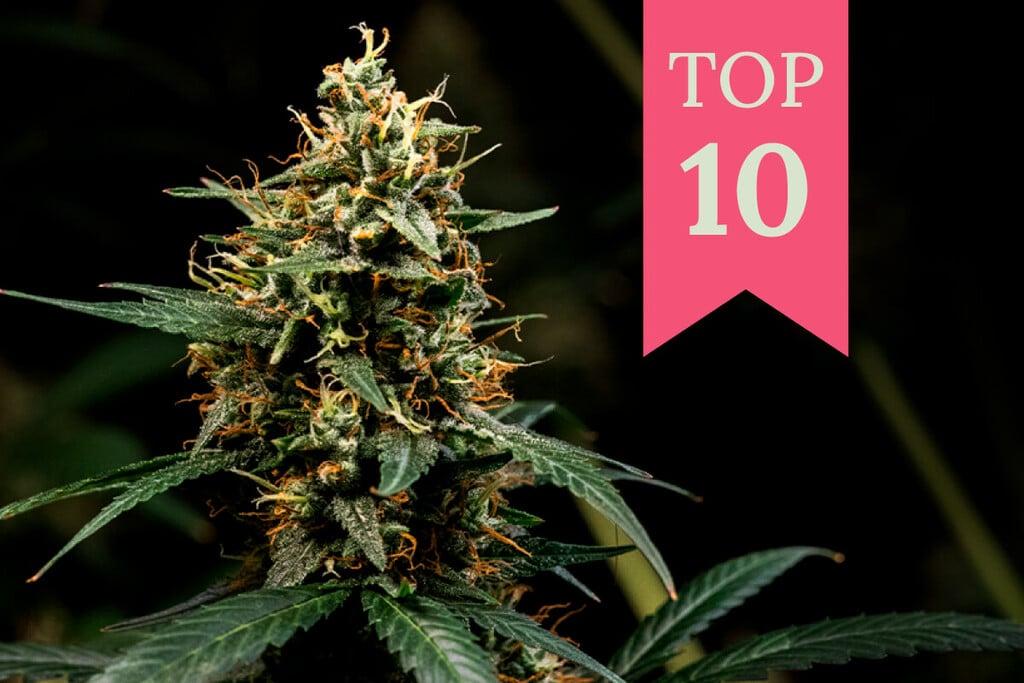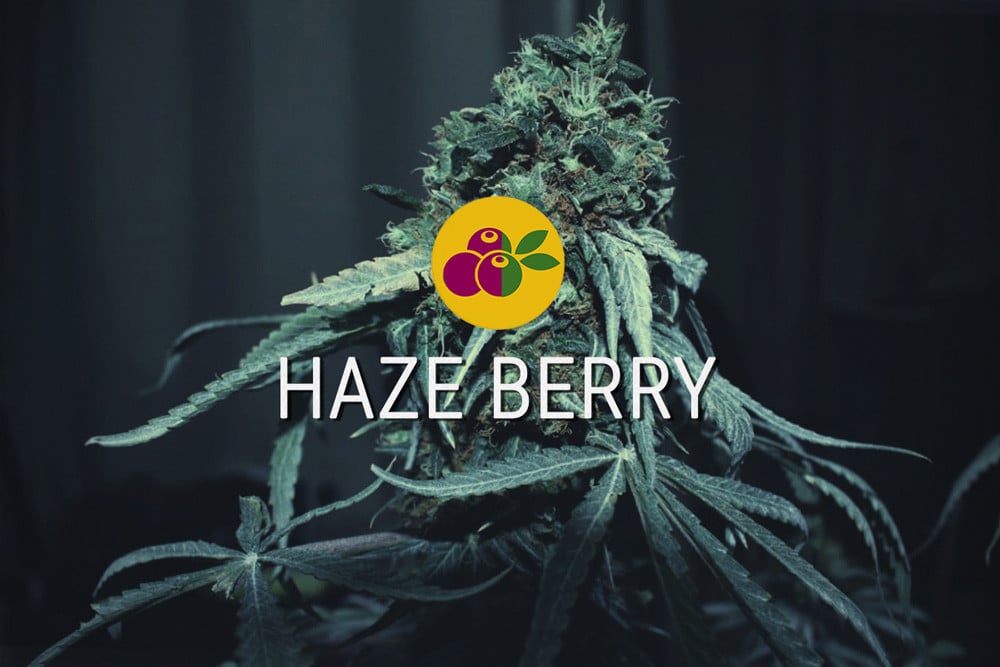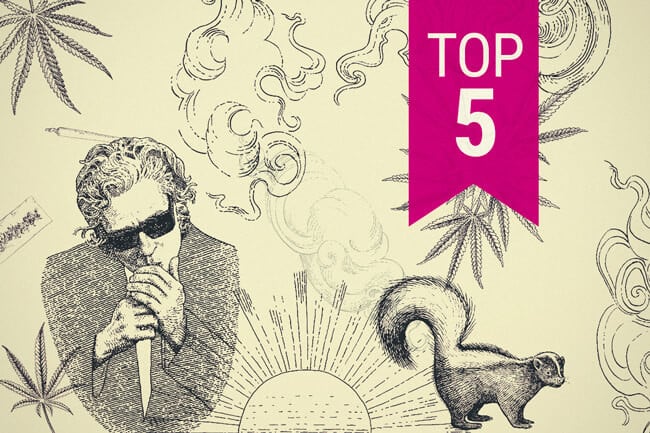.

Skunk, Haze, And Kush: The Foundations Of Today’s Cannabis
Almost every cannabis user in the world has heard of Skunk, Haze, and Kush. But why have these varieties had such a profound impact? As well as being some of the first big strains in modern times, they also gave rise to hundreds of different cultivars that smokers know and love today. Discover everything you need to know about these classics.
When people enter the world of cannabis, they quickly discover the enormous amounts of strains that are out there. Growers have the luxury of choosing from a huge library of genetics, with each cultivar offering different tastes, effects, and growth traits. Smokers are treated to shelves full of all different kinds of varieties that all offer a slightly different experience.
Out of this ocean of choice, some varieties stand out from the rest. It doesn't take long after first smoking or growing cannabis to hear the names "Skunk", "Kush", and "Haze". These strains have earned a legendary status and proudly sit upon the pantheon of classic cannabis genetics.
This trio achieved their status because they offer something powerful and attractive. They're potent, loaded with flavour, and provide growers with superb yields year after year.
They've earned even more notoriety in recent times as breeders continue to use their genetics as the building blocks for hundreds of new hybrid strains.
Continue reading to discover everything you need to know about Skunk, Kush, and Haze genetics. You'll find out what makes them unique, their individual histories, and a few examples of the best strains that contain their genetics.
Contents:
What is skunk cannabis?
You've probably seen the term "skunk" plastered all over the news in reference to the super-strong forms of cannabis sweeping the streets and corrupting the youth.
It appears as though a journalist at some point in time failed to differentiate between the variety of Skunk and the fact that many modern strains possess THC levels that far surpass those of only a decade ago. Skunk, is in fact, one of the oldest bred hybrids on the modern market!
In reality, Skunk references a specific hybrid strain that stems from landrace genetics from different locations across the world. Known official as Skunk #1, breeders harnessed this variety to give rise to hundreds of new strains infused with Skunk genetics.
This smelly strain received its title from its namesake animal. Some cannabis users describe the scent of skunk terpenes as reminiscent of that sprayed from the rear of a certain black and white mammal. The name also simply hints at the strength and pungency of the aroma of Skunk #1.
It makes sense that the media, and other cannabis users, also use the term "skunk" to describe strong and smelly cannabis in general.
-
Skunk cannabis characteristics
So, what makes Skunk so special? Why has it ascended to such great heights within the world of cannabis? And what made so many breeders opt to use this strain to make new cultivars?
Well, Skunk offers a well-rounded package of phytochemicals, solid and reliable genetics, and delicious tastes. This slightly indica-dominant strain features a typically indica morphology. It grows in a compact and bushy manner and possesses thick-fingered fan leaves and a dense canopy.
On average, the strain contains a THC content of 17%, although this can fluctuate based on nutrition and lighting. When smoked, Skunk #1 elevates the mood, relaxes the body, and offers a relaxing and peaceful state of mind.
More recent analysis also suggests that Skunk #1 flowers contain around 1% CBG, a non-psychoactive cannabinoid that provides a soothing effect.
The flowers of this strain offer a pleasant and slightly sour taste. They contain high levels of the terpene myrcene that underpin the relaxing effects of the cultivar.
The strain makes a good smoke during the late afternoon and evening after you've completed all of the tasks of the day. Despite exerting a more sleepy effect, Skunk #1 still inspires creative thoughts and works great when writing or drawing.
Skunk #1 harbours reliable and hardy genetics. The strain can tolerate a range of growing environments but produces the best results in a warm and sunny environment. If you chose to grow this variety, you can expect to harvest her buds after a flowering time of 8-9 weeks.

.jpg)
History of skunk cannabis
Skunk has had a huge impact on cannabis culture. But where exactly does this legendary variety come from?
Skunk has quite an impressive past. It first appeared in the United States during the 1970s. At the time, most of the cannabis within the country arrived as imports from other nations. Much of the flowers came through the southern border, including huge amounts of the Mexican variety Acapulco Gold, as well as Colombian Gold from Colombia.
Although the exact truth behind the origins of Skunk #1 remains fairly obscure, the story goes that a breeder by the name of Sam the Skunkman created the first generation of this variety by crossing Colombian Gold, Acapulco Gold, and Afghani #1.
Sam then headed for Amsterdam, the cannabis hotspot of Europe, in 1983. Here, he teamed up with innovative breeders in the country. Together, they perfected Skunk #1 and made it into the strain we know today.
Best skunk cannabis strains
Since its inception, Skunk has given rise to hundreds of unique strains. Sweet Skunk Automatic represents the merging of skunk and autoflowering genetics. This fast-growing strain has maintained the original taste and potency but offers much quicker harvests. Skunk XL shows a completely different manifestation of Skunk genetics. This large strain grows up to 200cm outdoors and provides large yields that will keep your jars topped up for months.
Lemon Shining Silver Haze lies quite far down the Skunk family tree. This modern variety features the original sour taste of Skunk but contains much higher THC levels than the original. Speedy Chile combines the power of Skunk with the speed and efficiency of Chile Indica for a swift and satisfying harvest. Royal Critical descends from legendary varieties Afghani and Skunk. She provides a heavy and relaxing high, alongside a complex terpene profile defined by notes of candy, earthiness, pine, and fruit.

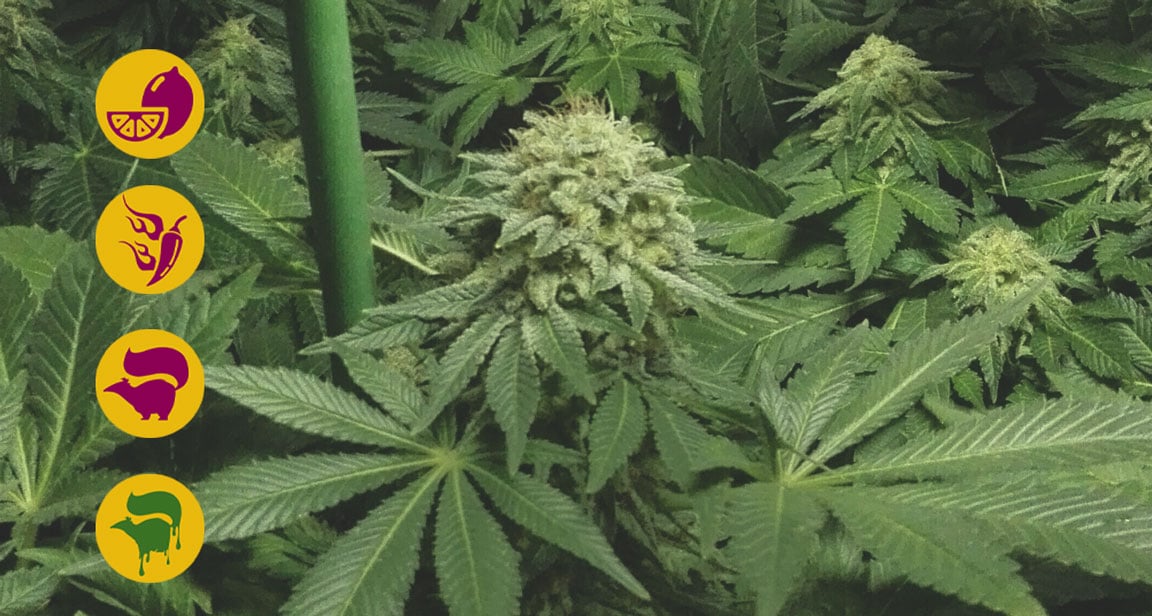
What is kush cannabis?
If it takes one day to hear the word "Skunk" after smoking weed for the first time, it will only take another 24 hours before you come across the word "Kush". Members of the Kush lineage are some of the most popular strains in the world and have come out on top during countless cannabis competitions.
These strains occupy the stoning indica end of the spectrum and have treated smokers to their deeply relaxing and euphoric effects for decades in the West. Humans also enjoyed the landrace ancestors of Kush, possibly for thousands of years, in their homeland of the Himalayas.
-
Kush cannabis characteristics
Kush cannabis strains possess unique traits that make it apparent they belong to the same family. A strong presence of Kush genetics in a cultivar will usually result in a recognisable appearance, smell, flavour, and effect.
The indica nature of Kush means that plants display a similar morphology to their Skunk cousins. They grow shorter and bushier than tall and lanky sativa plants. Their leaves are wide, their stems thick, and their canopies grow laterally.
Kush flowers are often dense, compact, and chunky. They feature pistils that vary in colour from bright orange to rust bronze.
These buds also carry a distinctive smell. The abundant trichomes on these flowers work hard during the flowering phase to pump out terpenes that converge to create scents of grape, flowers, diesel, earthiness, and citrus. These terpenes also create delicious flavours as the smoke passes over the taste buds.
Sure, Kush tastes great, but what about the effects? Kush strains provide a physical body high that melts the muscles. With THC levels averaging at around 18%, these flowers offer a pleasant and enjoyable high without overwhelming the user.
High levels of myrcene synergise with the psychoactive cannabinoid to add a further element of sleepiness. This cocktail of phytochemicals goes down well when smoked, but also offer a wild ride when consumed as an edible. These preparations taste superb and exert an intense high that lasts for hours at a time.
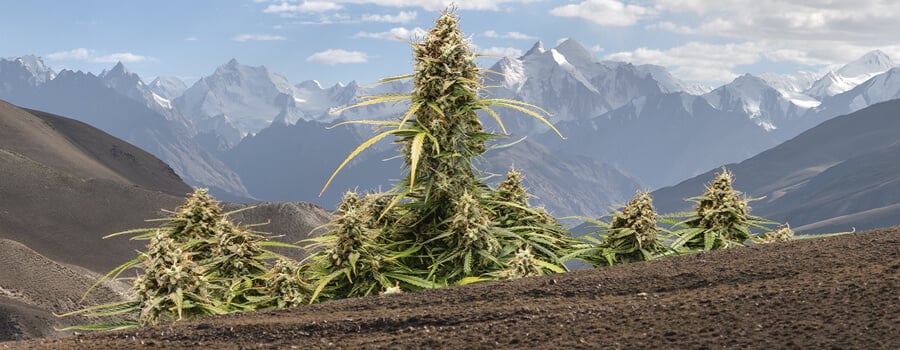
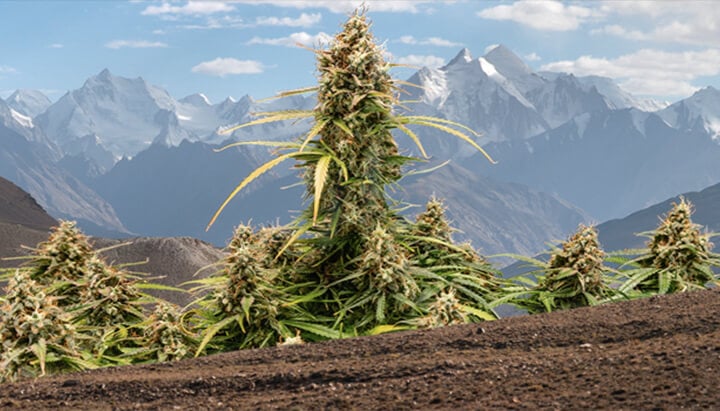
History of kush cannabis
Much like the other legendary cannabis strains, Kush boasts a rich and interesting history. The story of Kush all starts in the Hindu Kush region of the Himalayas. The borders of this region stem through countries including Afghanistan, India, and China — nations with an ancient historical use of the herb.
The Kush landrace developed naturally in this region. Generations of inbreeding at the hands of nature led to the creation of hardy and reliable genetics that are now precious to cannabis breeders all over the world.
It was the legendary Hippie Trail that resulted in the transportation of Kush genetics to the west. Many members of the hippie subculture made this overland journey from the mid-1950s to the late 1970s.
Starting from Europe and ending in India, Nepal, and Thailand, these peace and love enthusiasts sought new cultural experiences, mystical elements of religions, and good weed! Many of them ended up bringing home cannabis seeds, including those of the Hindu Kush variety.
When these seeds landed in the US, breeders became enthralled with the stability of these robust genetics. As an indica, the variety also boasted a much shorter flowering period than the popular sativa strains of those times.
Best kush cannabis strains
Because of the strains desirable traits, breeders have elected to use them in the creation of countless new varieties. OG Kush remains one of the most popular Kush strains of all time. She descends from a blend of Kush genetics and rose to fame thanks to her delicious fruity tastes and hard-hitting indica body high. Royal Kush Automatic merges the best Kush traits with the speed of ruderalis genetics. She's ideal for beginner growers and offers the benefits of increased stealth.
Special Kush 1 descends directly from pure Kush and Afghan. She provides moderate levels of THC, impressive yields, and a stoning high perfect for bedtime. If you're in the mood for something more powerful, you need to sample Critical Kush. This progeny of OG Kush and Critical Mass packs THC levels of 20% and a long-lasting physical high.


What is haze cannabis?
Haze completes this trio of legendary cannabis strains. As with the other two varieties discussed above, breeders in the United States also gave rise to this equally loved family of weed.
Haze brings something slightly different to the table than the other two varieties. In contrast to their stoning nature, Haze packs an energising sativa punch. Instead of stoning the body and making the user sleepy, Haze lights up the mind, fills the body with energy, and makes sitting on the couch almost unappealing.
Whether you're in a California dispensary or a Dutch coffee shop, you'll see a host of Haze genetics lining the shelves. These cultivars have gained massive traction over the last few decades precisely because of their motivating and happy highs.
-
Haze cannabis characteristics
As a sativa dominant hybrid, haze reaches much taller heights than her indica counterparts. Growers can keep indoor plants at a modest height with training techniques, but left to her own devices she can easily climb up to 300cm if given the room.
Haze plants also produce taller and thinner colas. These pillar-like structures are loaded with trichomes and occupy large expansive canopies.
Her tall colas are filled with sweet and citrus terpenes that bring the cognitive and energising characteristic to this high. Alongside THC levels of 16%, they create a clear-headed, happy, and often euphoric effect.
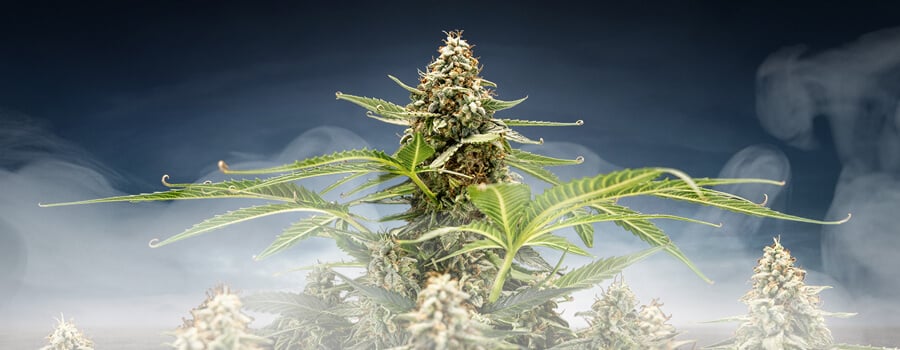

History of haze cannabis
Two talented breeders created Haze within the borders of California. During the early 1970s, brothers R. Haze and J. Haze created the hybrid by crossing Mexican and Colombian landraces.
After whittling away at the progeny over several generations of breeding, they finally landed on something that they decided to call Original Haze. Loaded with sweet terpenes, this strain provided the cerebral and mentally active high that they were looking for.
Interestingly, the Haze brothers were in contact with Sam The Skunkman around this time. The creator of Skunk #1 managed to get his hands on some Original Haze.
Sam took some of these seeds with him to Amsterdam in the 1980s and eventually gifted them to the famous Australian breeder Neville Schoenmakers. The Aussie went on to use the genetics to create Neville's Haze, a strain famous for its vibrant high and Cannabis Cup awards.
Best haze cannabis strains
Although most Haze strains offer a buzzing mental high, they also all offer something slightly different from each other. Royal Haze Auto packs a moderate THC content of 15% and will leave you feeling ready to conquer the day. Plus, you'll be harvesting flowers only 8-9 weeks after germination. As if Haze didn't taste good enough already, Haze Berry adds a whole new element of sweetness, alongside higher THC levels of around 20%.
Chocolate Haze also brings whole new flavours to these classic strains. This sativa variety treats the taste buds to hints of chocolate and jolts the mind to life with an intense head high. Finally, the legendary Amnesia Haze, one of the most famous and powerful cannabis strains of All Times.

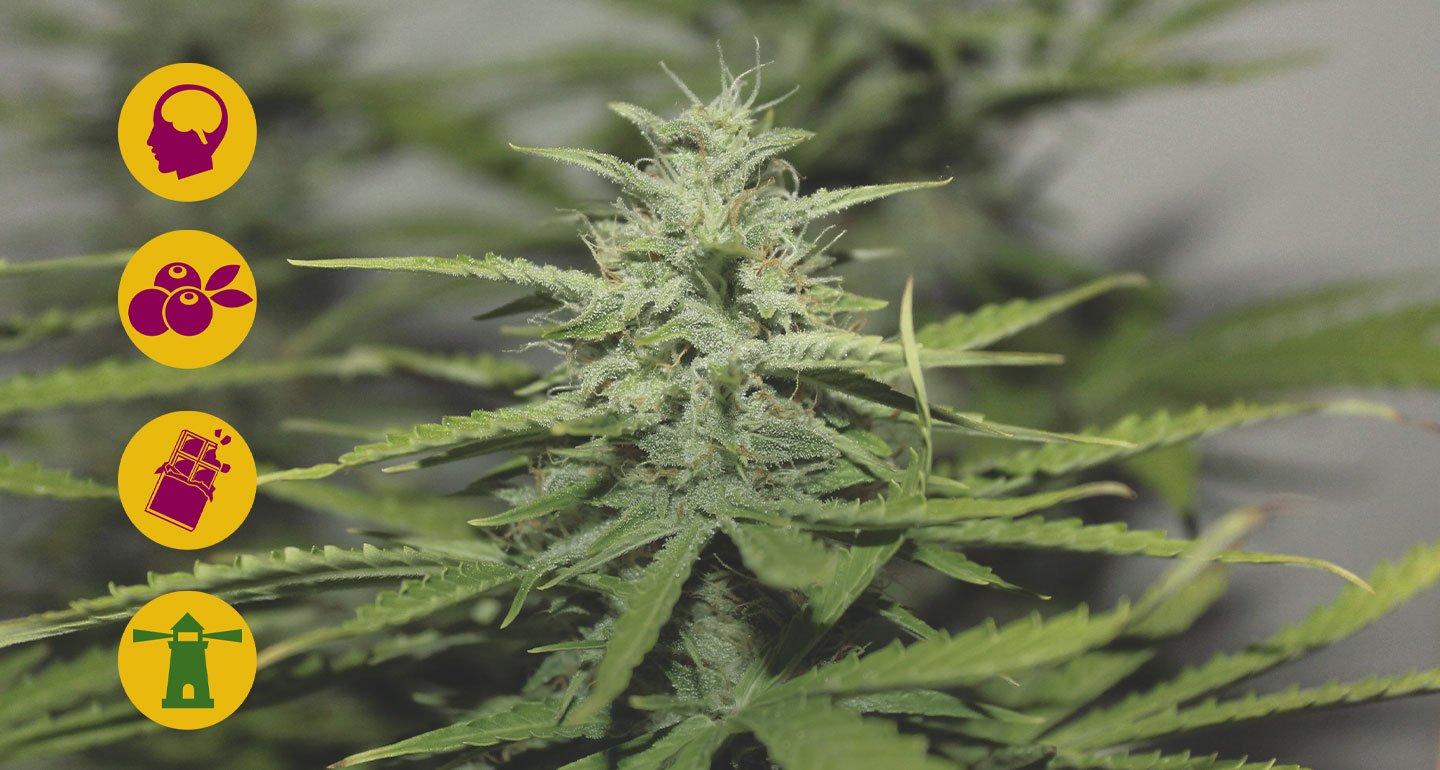
Skunk vs Kush vs Haze: Which is better?
It all depends! Every cannabis user has their own personal preference. Some love nothing more than to snuggle down on the couch with a good indica and get lost in their favourite TV show. Others are the complete opposite and would rather be hiking forest trails or surfing with the help of a powerful sativa.
Skunk and Kush are similar in that they both offer an intense body high that relaxes the body, clears the mind, and boosts the appetite. If you prefer to blaze during the evening after you've finished with work for the day, you'll love these strains.
Both of them also offer a similar growth pattern. Their shorter stature makes them great for indoor growers, especially those looking to keep things stealth.
Haze differs quite drastically in its size and effects. These plants come into their own when given a load of space outdoors. Plant them into beds and watch them climb to tall heights and produce massive yields.
You'll prefer Haze strains, too, if you prefer to blaze during the day while staying fully functional and engaged.




























